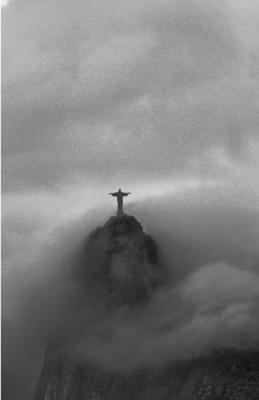
And so it is that we take note of anything that has to do with smoke, with a miasma, with fog or fumes.
For with smoke, it seems, have come ironies.
We noted last week that during the last major pandemic of influenza — from 1918 to 1920, the one that killed two Fatíma seers — there was speculation the source was Fort Riley, Kansas, where a stench was reported before an outbreak killed forty-eight soldiers and, as it spread through Europe, became known as “Spanish flu.” It was preceded by complaints from residents in Fort Riley of ugly smoke and odors, which some speculate may have come from soldiers burning hog feces.
Smoke. Fumes. Fog. And the devil? So often, when the diabolical is present, there’s a mephitis of sulfur.
When we look even further back, to the high Middle Ages, onset of the “Black Death” — perhaps the most famous plague in history — was preceded by decidedly odd phenomena: aside from violent quakes and hail storms and strange aerial luminosities, a sense of malady, of a corrupted atmosphere. Some insisted that an evil and noxious smoke, a foul blast of malignancy, had descended.
There were many omens: falling stars and (pertinent to us in this discussion) strange clouds.

As plague swept to the Mediterranean, from Asia (it had originated in China), the contagion was described by another chronicler as “a pestiferous wind” that spread “so poisonous an odor that many, being overpowered by it, fell down and expired in dreadful agony.”
Metaphors only? There were plenty of superstitions back then. Many theorized that toxic fumes were rising from cracks in the earth, claiming it was sulfur from the netherworld. Noxious clouds indeed! As for the Chinese: they were especially mysterious, steeped in a zodiac based on the dragon. And just before the Black Death, they had suffered from droughts, floods, and quakes (including one that caused a mountain called Tsincheou to collapse, creating a great chasm). In true apocalyptic fashion, the quake was followed by more drought which was followed by swarms of locusts and famine. Historian Philip Ziegler says a quake in the mountains of Ki-Ming-Chan formed a massive lake (we’re speaking about the mid-1300s) and may have killed five million.
It was like a horde of demons with arrows tipped with sulfur (or the deadly censer as in Revelation 8:5).
A disgusting plague it was. With God’s Grace, what we see now in China will never grow to those proportions. But is coronavirus at the least a “pre-warning”?
Such matters are not superstition, according to the Holy Catholic Church (despite its modern commentators and theologians). As it decimated Europe, Pope Clement VI himself declared the plague in Roman times a “pestilence with which God is afflicting Christian people.”
–MHB
[resources: The Last Secret and Michael Brown retreat, Charlotte, North Carolina]


